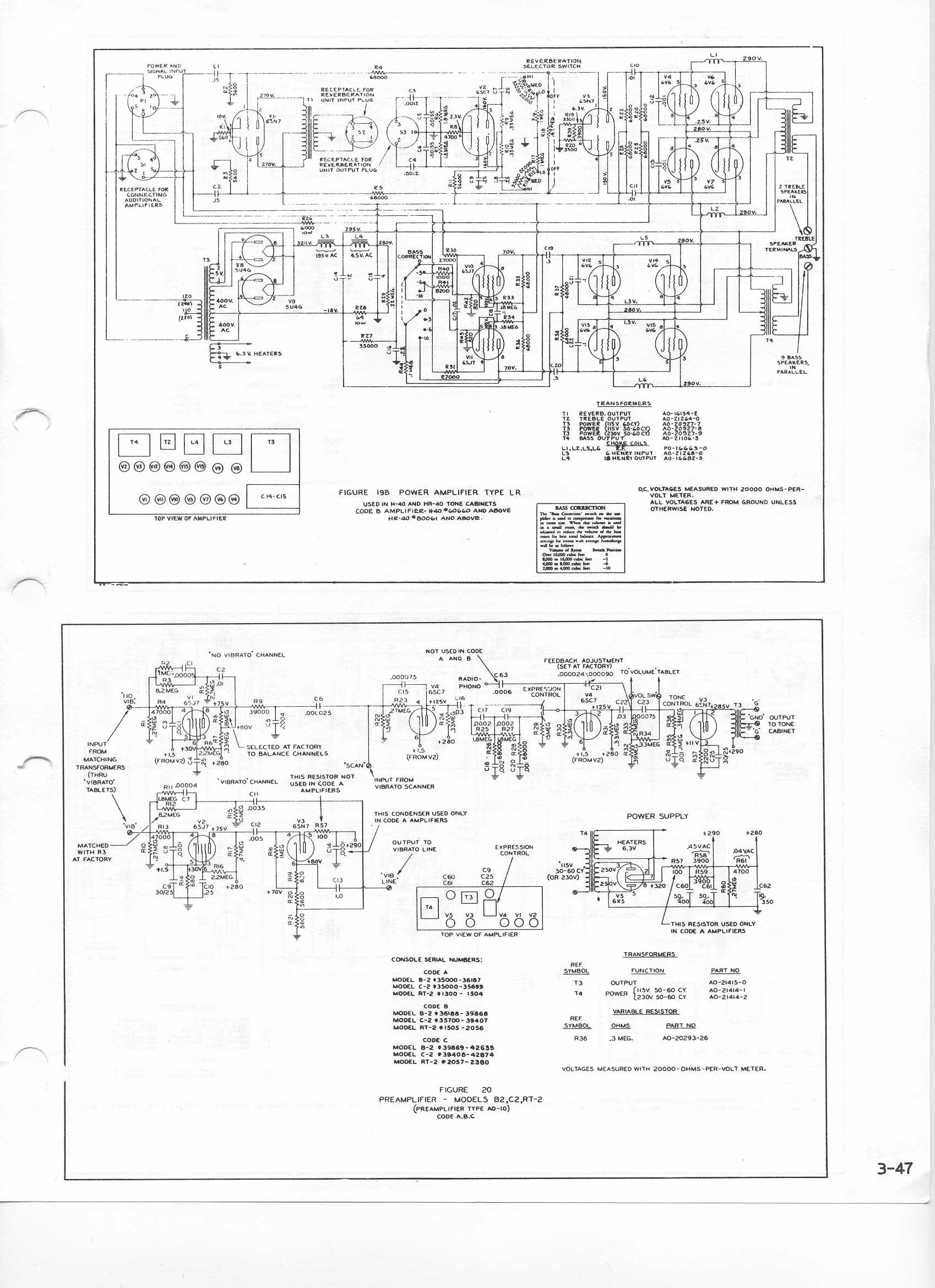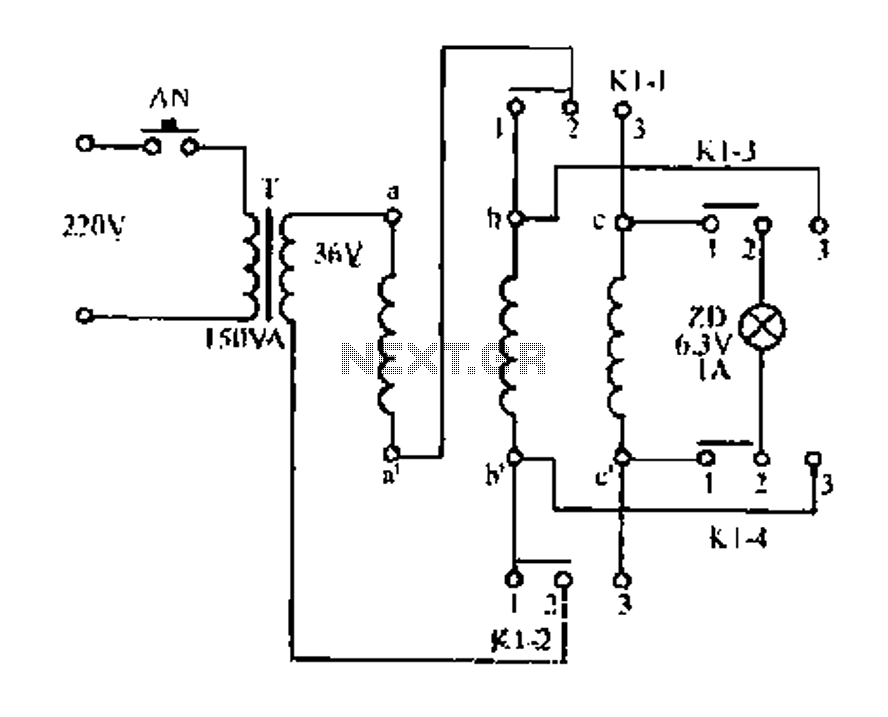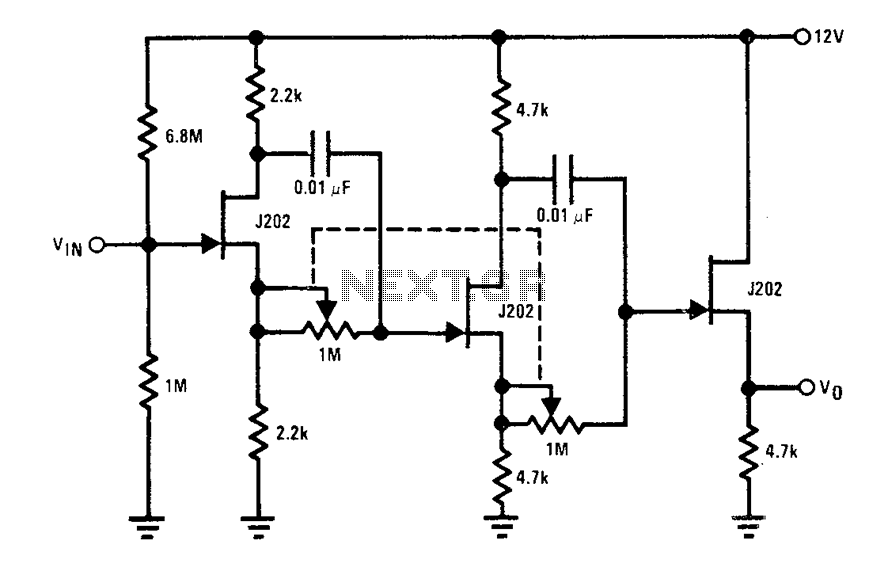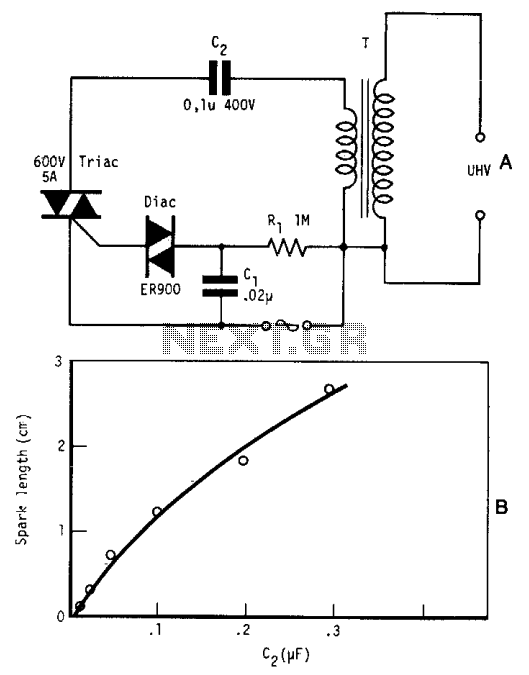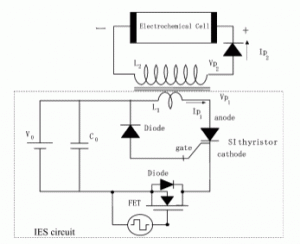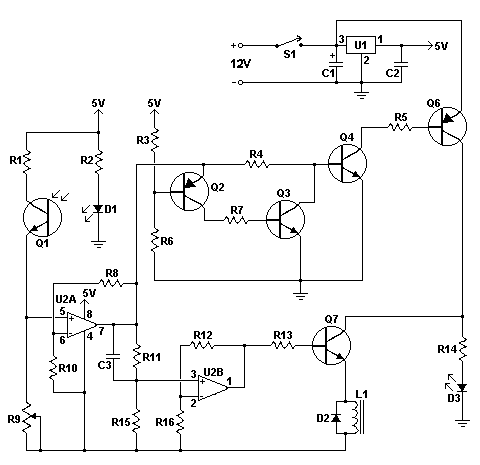
Magnetic Phono Preamp Has Ultra Low Noise Figure
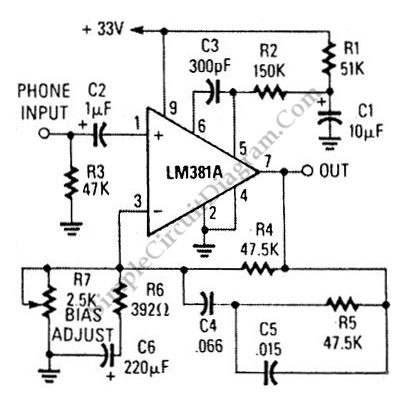
This circuit is an ultra-low noise magnetic phono preamplifier. It utilizes an LM381/1A operational amplifier and incorporates RIAA equalization.
The ultra-low noise magnetic phono preamplifier is designed to amplify the weak audio signals produced by magnetic phono cartridges while minimizing noise and distortion. The choice of the LM381/1A operational amplifier is critical due to its low noise characteristics, which contribute to the overall performance of the preamplifier.
The circuit includes RIAA equalization, which is essential for restoring the frequency response of the audio signal to its original form. This equalization compensates for the inherent frequency response curve of vinyl records, which is designed to reduce the amplitude of low frequencies during recording to prevent groove distortion and to boost high frequencies to improve signal-to-noise ratio. The RIAA equalization is typically implemented using passive components such as resistors and capacitors in conjunction with the operational amplifier to achieve the desired frequency response.
The design of the circuit may also incorporate additional features such as adjustable gain settings, input impedance matching, and power supply decoupling to further enhance performance. Proper layout and grounding techniques are crucial to minimize interference and maintain signal integrity throughout the preamplification process. Overall, this circuit serves as a vital component in high-fidelity audio systems, ensuring that the nuances of vinyl playback are accurately captured and reproduced.This circuit is a ultra low noise magnetic phono preamp. This circuit uses an LM381/1A. This circuit also includes RIAA equalization. This circuit has ultra.. 🔗 External reference
The ultra-low noise magnetic phono preamplifier is designed to amplify the weak audio signals produced by magnetic phono cartridges while minimizing noise and distortion. The choice of the LM381/1A operational amplifier is critical due to its low noise characteristics, which contribute to the overall performance of the preamplifier.
The circuit includes RIAA equalization, which is essential for restoring the frequency response of the audio signal to its original form. This equalization compensates for the inherent frequency response curve of vinyl records, which is designed to reduce the amplitude of low frequencies during recording to prevent groove distortion and to boost high frequencies to improve signal-to-noise ratio. The RIAA equalization is typically implemented using passive components such as resistors and capacitors in conjunction with the operational amplifier to achieve the desired frequency response.
The design of the circuit may also incorporate additional features such as adjustable gain settings, input impedance matching, and power supply decoupling to further enhance performance. Proper layout and grounding techniques are crucial to minimize interference and maintain signal integrity throughout the preamplification process. Overall, this circuit serves as a vital component in high-fidelity audio systems, ensuring that the nuances of vinyl playback are accurately captured and reproduced.This circuit is a ultra low noise magnetic phono preamp. This circuit uses an LM381/1A. This circuit also includes RIAA equalization. This circuit has ultra.. 🔗 External reference
Warning: include(partials/cookie-banner.php): Failed to open stream: Permission denied in /var/www/html/nextgr/view-circuit.php on line 713
Warning: include(): Failed opening 'partials/cookie-banner.php' for inclusion (include_path='.:/usr/share/php') in /var/www/html/nextgr/view-circuit.php on line 713
